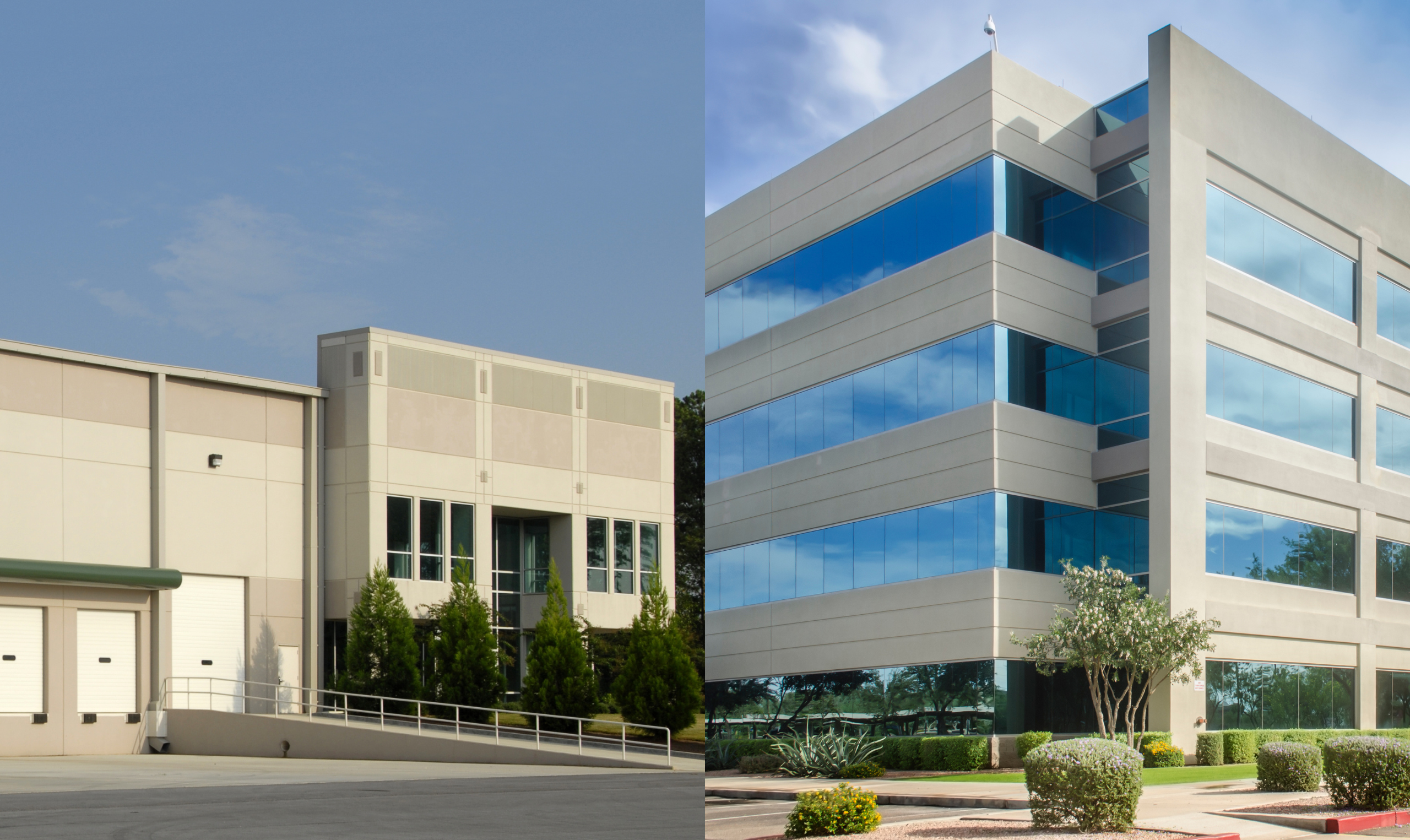NEWS POST
Plan for your building’s next disaster – it’s coming whether you are ready or not
By: Amy Melchior, Executive Vice President Property Management

Any experienced property manager is no stranger to calculated risk management and disaster planning for the assets under their care. After a global pandemic and civil unrest followed by continued climate change, property managers can add substantial value to property owners by implementing new technology, digging into data, leveraging contractors, and creating plans to minimize the risk and cost of any future disaster.
During the pandemic, property managers were at the front-line, adding signage for social distancing, implementing facial recognition for access control, providing unprecedented cleaning protocols, and working with HVAC contractors to improve air quality and filtration in their buildings. Today, they are on the front-line combating rising insurance and operating costs, increased office vacancies, creating cool amenities for tenants, or even pivoting office assets to multi-family.
For each of those challenges, property managers are invaluable to property owners and tenants by bringing their creative problem-solving, practical experience and judicious expense control to the 530 million sq. ft. of commercial office, retail, and industrial space in the Twin Cities.
Rising costs drive operating expenses
In the world of CRE, property managers are often in the background, focused on the large and small details. Every detail contributes to the building’s operating expenses and directly to the tenant’s monthly expenses. It’s the job of the PM to find the best option for long- and short-term expenses necessary to operate buildings. Among these, insurance costs can have a substantial impact on property operating expenses. Over the last three years, insurance premium increases have reached double digits, driven by the increasing frequency and intensity of natural disasters and rising replacement values due to inflation of construction materials.
Catastrophic insurance coverage for properties with poor risk profiles have seen increases from 45% to 150% over this timeframe. Some PMs combat rising premiums by bundling buildings together under one portfolio policy, which benefits all clients. This often offers better coverage and significant cost savings that smaller-scale property owners cannot purchase on their own. This kind of expense control allows owners to pass the savings on to their tenants or use the money to otherwise improve buildings. Shrewd expense control also leaves room for incremental rent increases for landlords.
Property taxes — another rising cost — have extended to industrial spaces in most cities due to office valuations declining and significant increases in industrial property valuations. While the increased value of industrial assets has been good for industrial property owners and sellers, tenants in industrial properties may receive serious sticker shock when reviewing year-over-year expenses with the increased property tax included. For tenants in office spaces, the reduced valuation of the property may not translate into lower property taxes for 12 months or more, unless the property managers and owners are diligently seeking reductions.
When will the next crisis strike? What are the possibilities?
A few crises are predictably looming. According to Bloomberg, more than $900 billion or 20% of the total US commercial and multi-family real estate debt will mature this year. The potential for lenders to require payback of outstanding debt on office properties with significant vacancy could be crippling to the regional banking and commercial real estate industries. The remaining debt on these properties is likely to exceed today’s appraised value, meaning the owners would need to find additional capital to pay or renew the loan. If the owner doesn’t have that option, it’s possible to “give the keys” back to the lender.
That process, called Receivership, requires the court to appoint an impartial third party as Receiver, typically a property management team, to take control of a property and act as owners on behalf of both the lender and the property owner during the Receivership period. Receivership is a big step for both lenders and owners, and few in the industry take that step lightly. While widespread Receivership hasn’t started, property management teams are already thinking about what that might look like to get prepared. As the frontline for the tenants, lenders, and property owners, PMs are key to the success in that process.
Being appointed a Receiver is not for the faint of heart. The process can be hostile if both parties are not aligned in the decision to proceed. The relationships can be emotional if the defaulting party has long-standing ties to the property and is not ready to exit. It is also often that the defaulting party simply abandons the relationship and there is little information or transfer of knowledge for the Receiver to operate the property. Tenants can feel lost in the process if the Receiver is not knowledgeable enough or staffed well enough to effectively oversee things like lease renewals, approvals of tenant requests, or problem-solving on their behalf. Simple account receivable disputes can be difficult to resolve if the information is not available from the debtor. The rules for Receivers are clear in Minnesota but each lender and debtor bring a different set of operating challenges.
Inevitably, climate, workforce, and market changes will continue to challenge the operations of commercial properties. In some locations, the PM staff will need to plan for wildfires due to drought. In others, drought will cause reduced water available for operations, which may drive new environmental regulations. Hybrid workforce preferences will likely require new ways to heat/cool, clean and operate buildings allowing for more flexible and sustainable systems. All change is interconnected, and we see building operating costs increasing in response.
Looking forward
One key duty of the PM is to look forward – for operational or staffing needs, capital improvements, budgets for ongoing maintenance, technology trends and tenant turnover. If the pandemic, recent environmental disasters, and the GFC taught us anything, it was not to be surprised when bad things happen. We’ve also learned yet again to plan for the worst and hope for the best during any challenge.
Property Management
At Forte, our experienced, credentialed professionals pride themselves on managing your real estate as if it were their own by being proactive, diligent, and considerate. Most importantly, we strive to offer a physically and financially predictable experience for tenants and owners.

Amy Melchior, CPM
Executive Vice President | Property Management
o: 952-525-3338
amy.melchior@forterep.com
News & Updates
Founders Properties to move to 6,500 sq. ft. in Eden Prairie
NEWS POSTFounders Properties to move to 6,500 sq. ft. in Eden PrairieMinneapolis (June 23, 2025) – Founders Properties, a privately held real estate investment management firm, has decided to move out of its long-time Minnetonka home to 6,500...
Forte Real Estate Partners Recognized as one of MSP Business Journal’s Best Places to Work
NEWS POSTForte Real Estate Partners Recognized as one of MSP Business Journal's Best Places to WorkMinneapolis (June 16, 2025) – Forte Real Estate Partners has been recognized for the third year in a row as one of Minneapolis/St. Paul’s Business Journal’s Best Places...
Arbor Lakes Medical Office and Grove Medical Traded in May
NEWS POSTArbor Lakes Medical Office and Grove Medical Traded in MayForte’s Steve Brown acts as CBRE’s local market expert in salesMinneapolis (June 9, 2025) – Steve Brown, principal – Forte, joined CBRE’s U.S. Healthcare Capital Markets...



